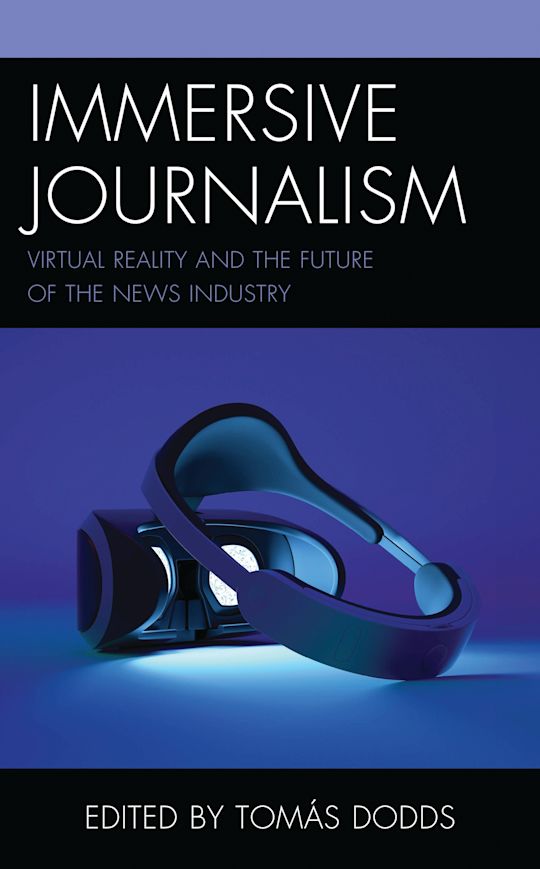Immersive Journalism
Virtual Reality and the Future of the News Industry
Immersive Journalism
Virtual Reality and the Future of the News Industry
Description
This volume explores the rise of immersive technologies such as virtual reality, augmented reality, and 360 videos in the newsroom and how they affect newsmaking for journalists, news sources, and audiences. As these technologies offer journalists new and exciting opportunities to connect more deeply, emotionally, and presently with their audience, they also introduce unique ethical and practical questions concerning the collection and use of biometric, sensory, and metadata. Contributors analyze this shift from passive consumption to active engagement in order to investigate the positive and negative impacts that immersive technologies can have on journalistic norms, professional ethics, audience engagement, and data protection. Ultimately, this volume highlights both the potential for these technologies to redefine the relationship between news producers and consumers and the potential challenges their integration may pose. Scholars of journalism, communication, science & technology studies, and digital media will find this book particularly useful.
Table of Contents
Chapter 1: Immersive Journalism After the VR Hype from Media Professionals’ Perspective
Chapter 2: Immersive Journalism Skills as Cultural Capital: Gaining Legitimacy in the Contemporary Newsroom
Chapter 3: Immersive Journalism and Emerging News Values of Emotional Objectivity and Subjective Accuracy: Between Effects and Norms
Chapter 4: The Young Reporter Programme: A Digital Intelligence Perspective
Part II
Chapter 5: 360-Degree Journalism: Ethics and Challenges of Immersive Storytelling in Africa
Chapter 6: Emotional Engagement and Information Recall in Immersive Journalism: A Systematic Literature Review
Chapter 7: “Above all, it was fun”: Interactive Documentaries as Immersive Journalism
Chapter 8: Combating and Co-opting Immersion: Lessons from Audio-Visual Entertainment
Part III
Chapter 9: Immersive Environments, Evolving Ethics: How Computational, Data and Immersive Journalists Can Learn from Each Other
Chapter 10: Ethics of Care: Considerations in Collecting Audience Data for Immersive Journalism
Chapter 11: Information Processing of Augmented Reality News about History: Mediation Role of Transportation and Flow Experience between Telepresence and Attitudes Toward Civil Rights
Chapter 12: Biometric Immersive Journalism: Understanding a New Technological Frontier
Product details
| Published | Apr 17 2024 |
|---|---|
| Format | Ebook (PDF) |
| Edition | 1st |
| Extent | 254 |
| ISBN | 9798216338901 |
| Imprint | Lexington Books |
| Illustrations | 8 BW Illustrations, 7 Tables |
| Series | Studies in New Media |
| Publisher | Bloomsbury Publishing |
Reviews

ONLINE RESOURCES
Bloomsbury Collections
This book is available on Bloomsbury Collections where your library has access.

































